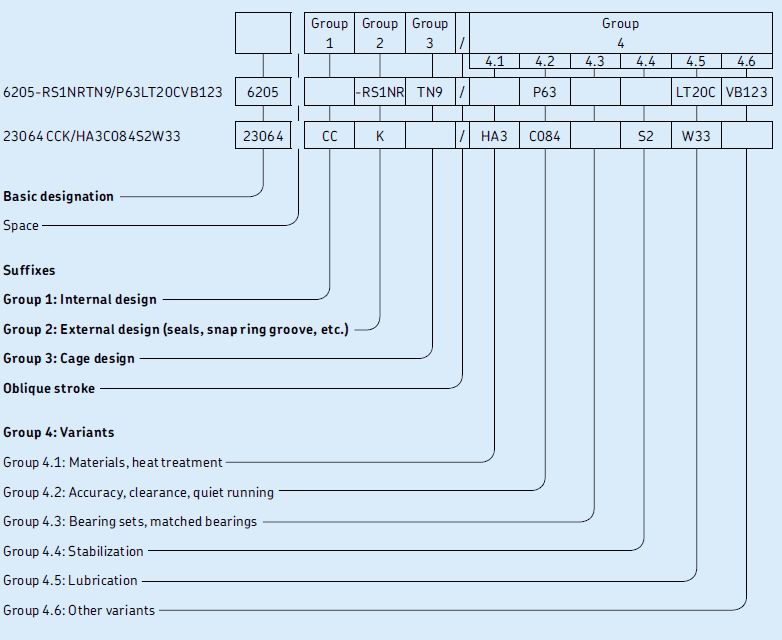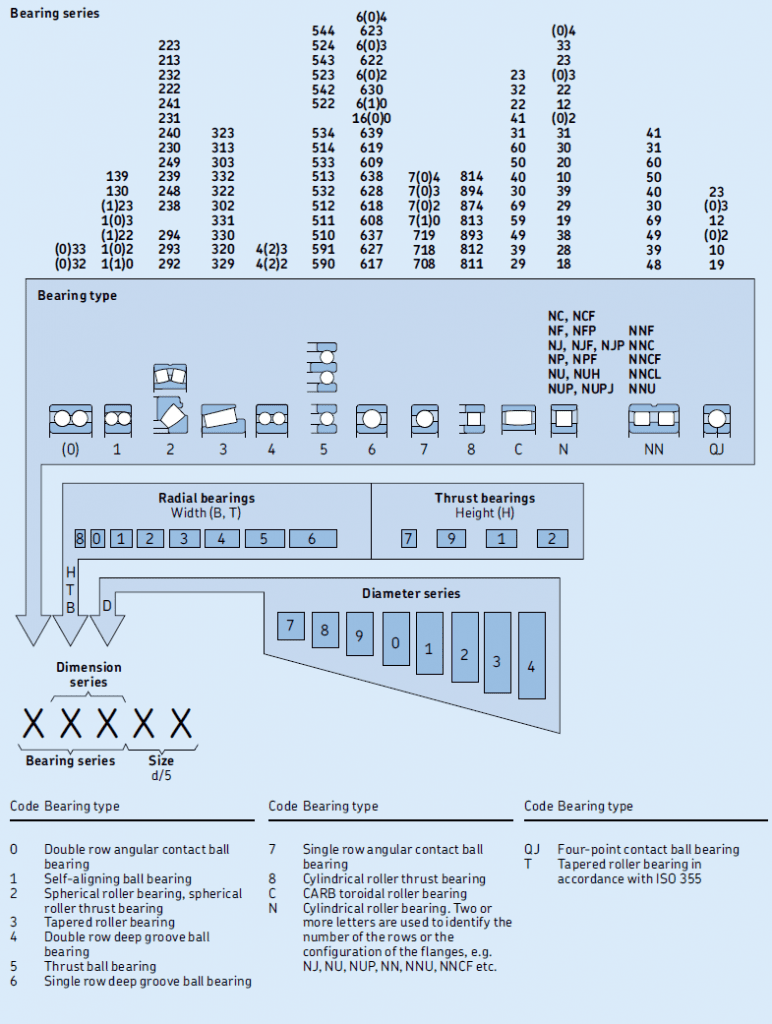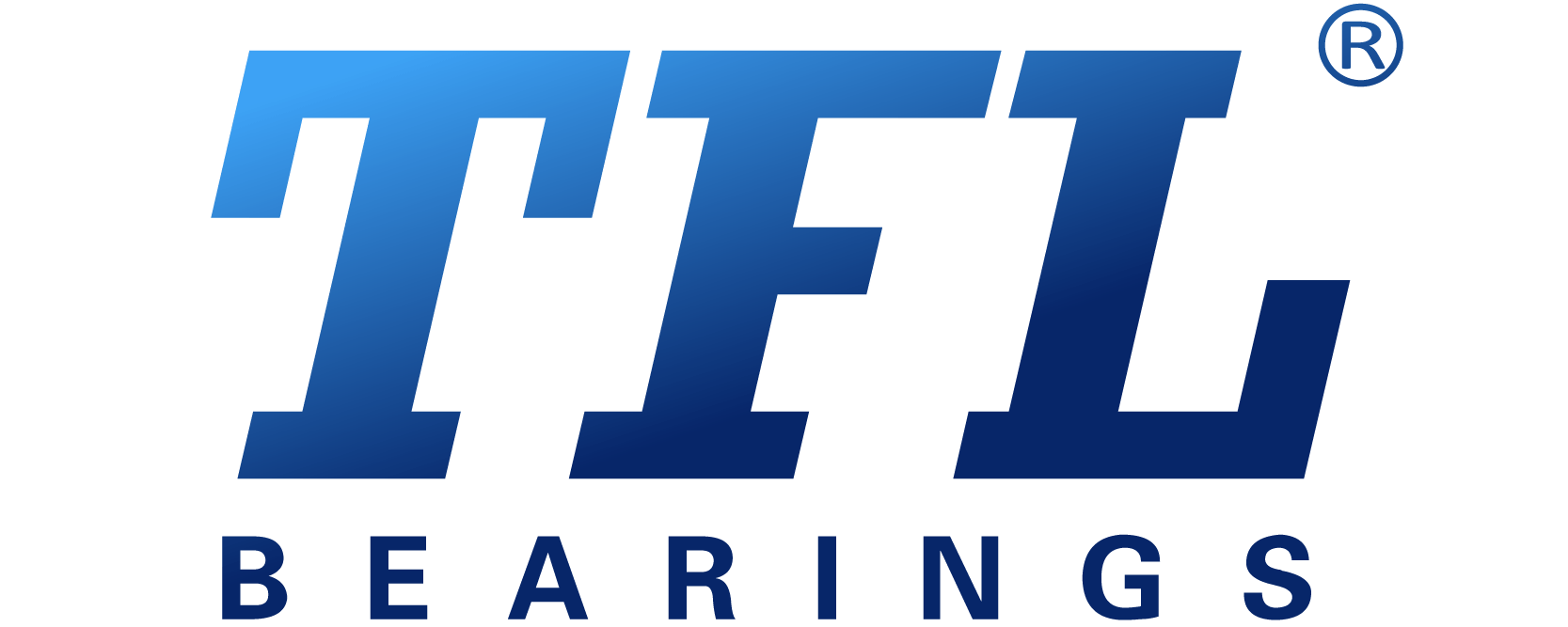Supplementary Description of SKF Bearing Model
SKF Bearing Type Code
This article is a supplementary description of SKF-bearing models. The basic code represents the type, size, and standard design of the bearing. The model of metric size bearing can only contain basic code or basic code plus other supplementary codes, which we call prefix and suffix.
Basic code: 23230 Supplementary code: 23230 CC/W33

23230 (bearing type)
(0): Double row angular contact ball bearing
1: Self-aligning ball bearing
2: Spherical roller bearings and spherical roller thrust bearings
3: Tapered roller bearing
4: Double row deep groove ball bearings
5: Thrust ball bearing
6: Single row deep groove ball bearing
7: Single row angular contact ball bearing
8: Cylindrical roller thrust bearing
N: Cylindrical roller bearing
QJ: Four-point contact ball bearing
C: CARB toroidal roller bearing
23230 (width), where the second number represents the width series, according to different bearing types, it represents the width or height of the bearing. Most deep groove ball bearings do not show this number on the model number.
23230 (outer diameter), where the third number represents the outer diameter.
23230 (inner diameter), where the last two numbers represent the inner diameter of the bearing. The last two numbers multiplied by 5 are the inner diameter d, in millimetres. But it is only suitable for bearings with an inner diameter of 20mm to 500mm.
When the inner diameter of the bearing is less than 10mm or greater than or equal to 500mm, the number after the slash directly indicates the size of the inner diameter. The unit is mm. (Some more miniature bearings will omit the slash). For example, the inner diameter of the bearing 623 is 3mm, the inner diameter of the bearing 618/8 is 8mm, and the inner diameter of the bearing 240/500 is 500mm.
When the inner diameter of the bearing is 10mm, 12mm, 15mm, or 17mm, it is indicated by the following code: 00=10mm, 01=12mm, 02=15mm, and 03=17mm.
Finally, I will give you an example for reference:
The basic code 22206 represents a spherical roller bearing; the width series is 2, the outer diameter series is 2, and the inner diameter is 30mm.

SKF bearing model prefix:
IR-23232
AR: Ball and cage assembly or roller and cage assembly
IR: Inner ring of the radial bearing
K: Cylindrical roller and cage thrust assembly
L: Inner ring or outer ring of a separable bearing
OR: Outer ring of the radial bearing
R: Separate bearing without an inner ring or outer ring
Suffix of SKF bearing designation:
3204-ATN9
A: Internal design
2RS1: External design
TN9: Cage design
WT: variant
SKF bearing designation suffix:
The bearing suffixes are A, B, C, D, E, or other codes, starting with these letters to indicate that the internal design is different or improved. The basic dimensions remain the same, but the general rule is that certain established bearing types or series use different letters, and their meanings are also different.
example:
4210A: Double row deep groove ball bearing without ball slot.
22314E: Spherical roller bearing, optimized internal design. 7306B: Single row angular contact ball bearing, the contact angle is 40 degrees.
7205B: Single row angular contact ball bearing, the contact angle of 40 degrees, and optimized internal design.
SKF bearing model suffix-external design:
The external design means an improved structure, such as processing grooves in the outer ring to install seals, dust caps, or stop rings.
RS1 or 2RS1 means an acrylonitrile-butadiene rubber seal with stamped steel sheets attached to one or both sides of the bearing.
N means that a groove is machined on the outer circle of the outer ring to place the stop ring.
NR means that the bearing has a stop ring groove with a suitable stop ring.
Another example of the external design is the suffix K to indicate that the inner bore of the bearing is conical.
SKF bearing model suffix-cage design:
The suffix indicating the cage design is placed after the code designation of the internal or external design. It shows the processing method and material of the cage. Some suffixes have extra letters to indicate their detailed specifications.
F: Cage of machined steel or special cast iron
J: Stamped steel cage
M: Machined brass cage
TN9: Plastic injection glass brazed reinforced nylon 6.6 cage
P: Injection glass brazed reinforced nylon 6.6 cage
V: Bearing without cage (full roller)
SKF bearing model suffix-variant:
The suffix indicating the variant is placed at the end of the model number and separated by a slash. Common examples of modified suffixes are heat treatment, clearance, and types of preloaded grease.
Variant type-clearance:
Because the difference in temperature and the amount of interference will affect the working clearance of the bearing, it is necessary to select bearings with different initial clearances, including radial or axial clearance. Add a suffix to the model number for bearings other than average clearance and indicate it on the bearing and packaging.
C1: Radial clearance is less than C2
C2: Radial clearance is less than C3
–: Ordinary radial clearance
C3: Radial clearance is more significant than C2
C4: Radial clearance is more significant than C3
C5: Radial clearance is more significant than C4
Variant type-material, heat treatment:
The modified suffix can be used to indicate the material and heat treatment of the entire bearing or component, for example:
HA3: Inner ring with the hardened surface (HA means hardened surface, and the following numbers indicate the components of the bearing)
HB1: Bainite hardened inner ring and outer ring
HC5: The material of the rolling elements is silicon nitride
Variant type-grease:
The suffix used to represent the grease pre-installed in the bearing includes two English letters and two numbers to indicate the temperature range and the grease used.
/HT: high temperature grease: (-20 to +130 degrees Celsius)
/MT: Medium temperature grease: (-30 to +110 degrees Celsius)
/LT: Low temperature grease: (-50 to +80 degrees Celsius)
/WT: Wide temperature grease: (-40 to +160 degrees Celsius)
